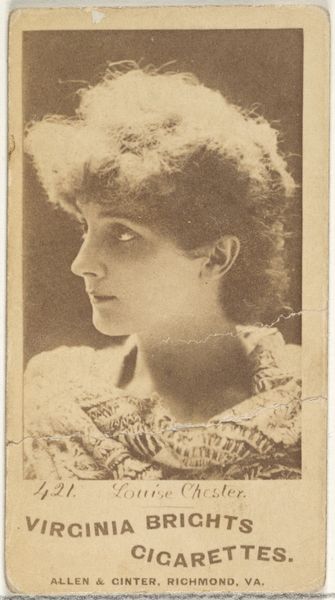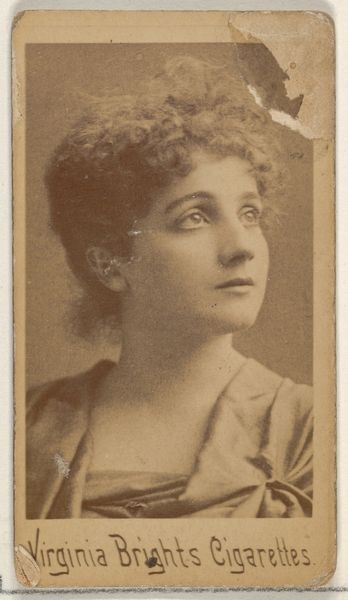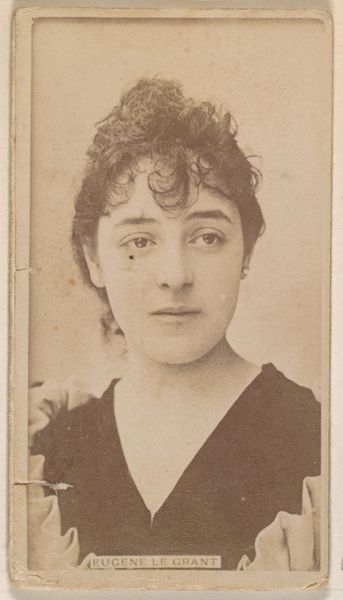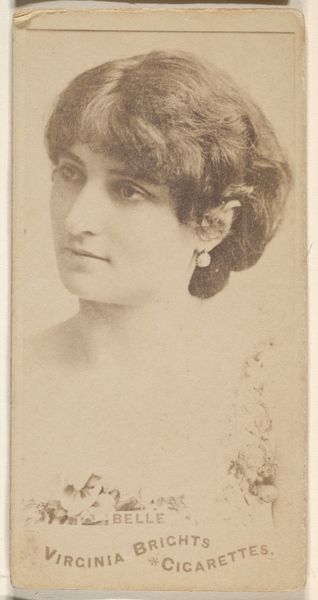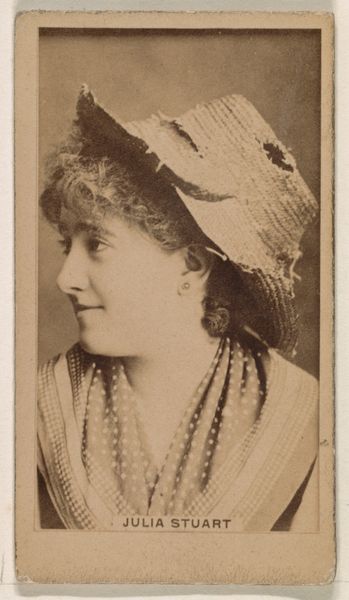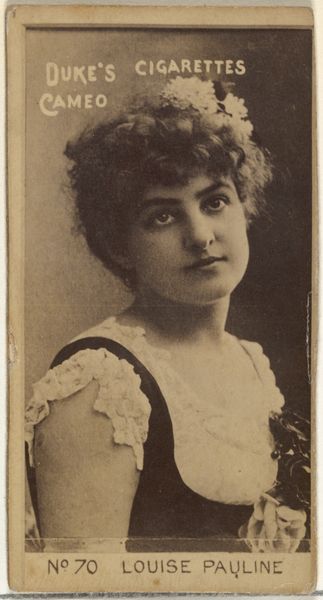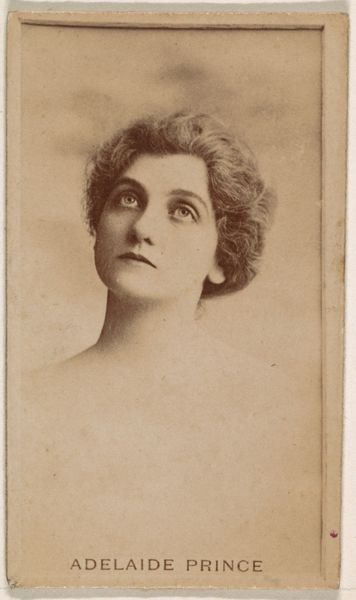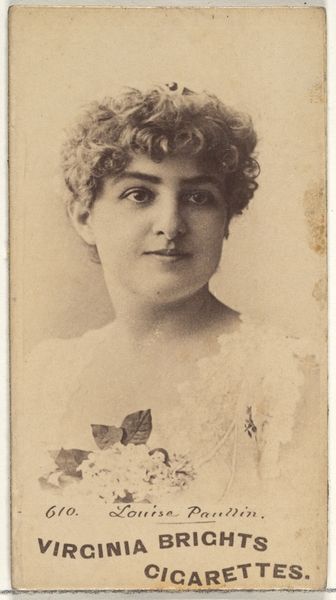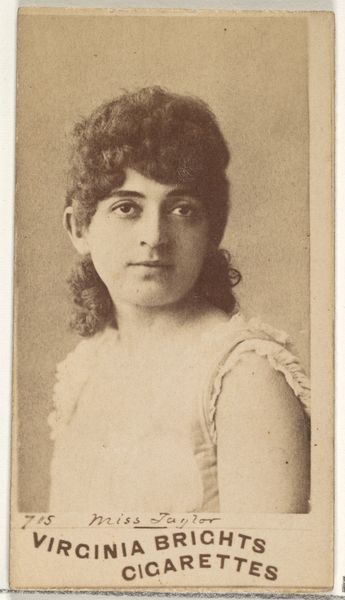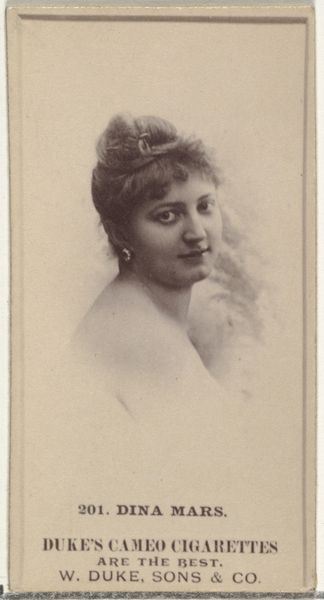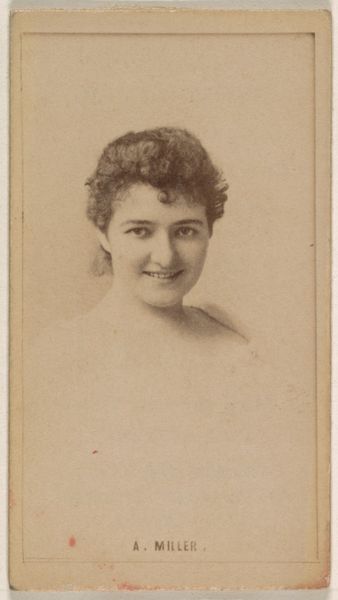
#
aged paper
#
homemade paper
#
paperlike
#
sketch book
#
paper texture
#
personal sketchbook
#
folded paper
#
golden font
#
paper medium
#
historical font
Dimensions: height 114 mm, width 92 mm
Copyright: Rijks Museum: Open Domain
Curator: This is a portrait of Julia Gwynne, originating from The St. James's Photographic Company sometime before 1884. The photograph itself is carefully placed inside what appears to be a personal sketchbook. Editor: The paper's aged beautifully. It feels so tactile, almost like you could reach out and feel the fibers. There's a lovely warmth to the sepia tones, too. Curator: The St. James's Photographic Company was known for its society portraits, catering to the elite. Displaying the portrait in a sketchbook contextualizes photography in a shifting field between personal and public presentation in the late 19th century. Editor: Absolutely. The very fact that it's glued into a sketchbook changes our perception. It wasn't just about capturing likeness; it's about creating a memento, a material record within a private space. Did Julia Gwynne put it there herself, I wonder? Curator: It's certainly a possibility. And the inscription above the portrait reads, "Well done, simplicity". Is this a reference to her natural appearance or a commentary on the artistic style? The fact it comes from “The Rivals” suggests artifice, not just reality. Editor: Perhaps both were important to Julia. Looking closely at the framing, too—the ornate border around the photograph. It’s like framing a frame, highlighting both the 'high art' portrait and its craft-based integration into the sketchbook. It feels deliberately staged, considered. Curator: It speaks to the deliberate crafting of identity in the photographic medium and beyond. It makes me think about the relationship between these photographic studios, the individuals they photographed, and the ways imagery circulated. Editor: For me, it brings out a certain fragility. The fading image, the delicate paper - they’re all part of this very human story of memory and materiality. It's fascinating how a studio photograph then becomes something quite unique by entering Julia’s own personal orbit and a lived materiality. Curator: Indeed. This image offers a compelling view into the Victorian era’s culture, showing both society’s desire for remembrance and also commercialized, almost factory-like, picture production. Editor: It leaves me pondering the lives contained within these old albums. So much history bound within paper and ink.
Comments
No comments
Be the first to comment and join the conversation on the ultimate creative platform.
